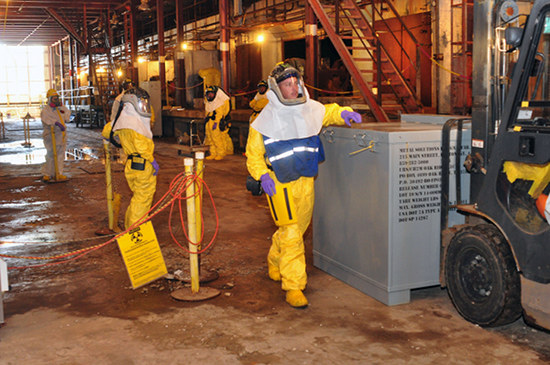
The interior of the K-27 Building, which once enriched uranium through a process called gaseous diffusion, is pictured above on March 30, 2015. (DOE photo by Lynn Freeny)
Information from Oak Ridge Today and the January 2016 issue of “Advocate,†a publication of the Oak Ridge Site Specific Advisory Board
Demolition work could start early this year on the K-27 Building, the last of five gaseous diffusion buildings at the former K-25 site, now known as East Tennessee Technology Park or Heritage Center. The giant buildings were once used to enrich uranium for nuclear weapons and nuclear power plants, starting during World War II and continuing through the Cold War.
Deactivation work continues at the K-27 Building, preparing it for demolition. At the beginning of December, deactivation of the building was more than 96 percent complete. Workers continue to remove transite paneling on the building, but that job is 80 percent complete.
Sue Cange, manager of the U.S. Department of Energy’s Oak Ridge Office of Environmental Management, has previously said that demolition work could start on the building in early 2016 and be complete by the end of the year.
Demolition work on the former K-31 Building, the fourth of the five buildings to be demolished, was completed in June.
The former K-25 site, which has also been known as Oak Ridge Gaseous Diffusion Plant, was built during the Manhattan Project in World War II as part of a top-secret federal program to build the world’s first atomic bombs. Officials say it helped to win the Cold War, enriching uranium for commercial nuclear power plants and nuclear weapons after World War II.
But operations ended in 1985, and the site was permanently shut down in 1987. DOE then began cleanup operations and—with the help of contractors, a nonprofit organization, and others–is converting it into a large private industrial park in west Oak Ridge.
The cleanup work includes demolition of many of the buildings at the site. In June, Cange said there were once about 500 buildings at ETTP, but 380 of them have been demolished. That includes the former mile-long, U-shaped K-25 Building, which was also used to enrich uranium and was once the world’s largest building under one roof.
Besides K-25 and K-31, the other two gaseous diffusion buildings that have been demolished are K-29 and K-33.
K-27 is the last remaining gaseous diffusion building. In June, officials said UCOR, the federal government’s cleanup contractor in Oak Ridge, had started deactivating the 383,000-square-foot facility to prepare it for demolition. A DOE initiative named Vision 2016 calls for having all gaseous diffusion facilities removed from ETTP by 2016.
Preparation work at K-27 includes removing hazards and deactivating it. The building was not properly shut down in the 1980s, so there was still some enriched uranium inside it, Cange said last summer.
At that time, the combined cost for decommissioning and demolishing the K-25, K-29, K-31, and K-33 gaseous diffusion buildings was reported to be about $1.5 billion, according to the DOE Oak Ridge Office of Environmental Management. Federal officials had approved a $292 million baseline to complete the K-27 project. Of that total, about two thirds was expected to fund pre-demolition activities, and a third would fund the facility’s demolition.
Officials said that removing the buildings eliminates a nuclear hazard and opens up more ETTP property for reindustrialization and regional economic development.
A contract has also been awarded to demolish an electrical switchyard adjacent to K-27.
More information will be added as it becomes available.
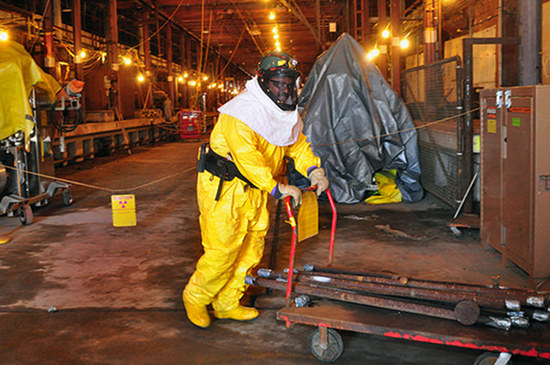
The interior of the K-27 Building, which once enriched uranium through a process called gaseous diffusion, is pictured above on March 30, 2015. (DOE photo by Lynn Freeny)
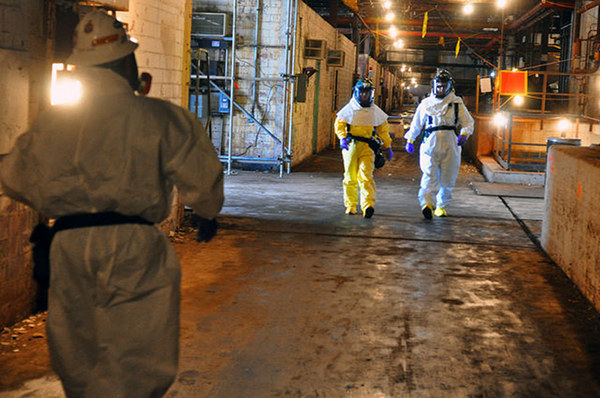
The interior of the K-27 Building, which once enriched uranium through a process called gaseous diffusion, is pictured above on March 30, 2015. (DOE photo by Lynn Freeny)
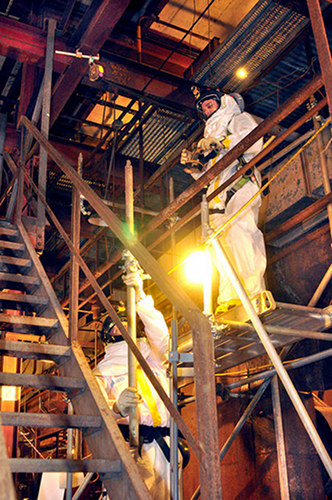
The interior of the K-27 Building, which once enriched uranium through a process called gaseous diffusion, is pictured above on March 30, 2015. (DOE photo by Lynn Freeny)
Copyright 2015 Oak Ridge Today. All rights reserved. This material may not be published, broadcast, rewritten, or redistributed.
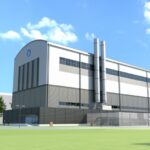

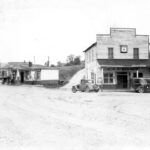
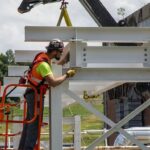
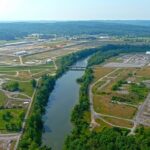
Leave a Reply